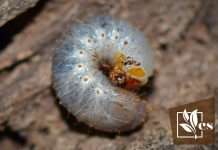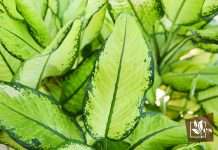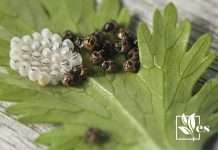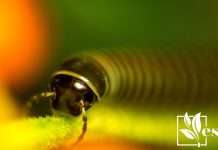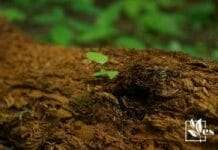Tomato hornworms rank among the most notorious pests for gardeners, especially if you’re passionate about growing tomatoes. I know firsthand how quickly and efficiently these marauders can strip foliage, leaving plants withered.

Fortunately, control and prevention of hornworms in the garden is possible. I always start by inspecting plants regularly, as early detection makes a big difference. I look for these large, green caterpillars or their black droppings. When I spot them, handpicking them off the plants is an effective immediate solution.
For a long-term strategy, cultivating the natural predators of hornworms, such as braconid wasps, is a sustainable method to keep their numbers in check. I encourage these beneficial insects by avoiding broad-spectrum insecticides and planting nectar-rich flowers to attract them. Together, these practices help maintain a balanced ecosystem in my garden, where hornworms are less likely to cause significant damage.
JUMP TO TOPIC
Identifying Tomato Hornworms and Their Impact
Identifying tomato hornworms promptly and understanding their life cycle are crucial in managing their impact on crops like tomatoes, potatoes, peppers, and eggplants.
Physical Characteristics and Life Cycle
I know these pests well—they’re formidable foes in the garden. Tomato hornworms are large, green caterpillars that can reach up to 4 inches in length. They are marked with diagonal white stripes and have a characteristic horn at their posterior end. As for tobacco hornworms, they display similar size and a red horn. These caterpillars are the larvae of the five-spotted hawk moth or the hummingbird moth, transitioning through a life cycle that starts from eggs laid on the underside of leaves, moving to voracious larvae, and then into pupation in the soil.
Damage to Plants and Crop Yield
The damage these hornworms inflict is hard to miss. They defoliate plants, concentrating on the upper leaves and can even chomp on the green fruit. The result? Significantly reduced crop yield. Hornworm damage is not just the loss of leaves but also the potential to open up remaining leaves and fruit to sunscald due to reduced coverage.
Common Host Plants and Garden Infestation
💥 Host Plants:
Tomato hornworms are primarily associated with plants in the nightshade family; this includes tomatoes, potatoes, peppers, and eggplants. Garden infestation typically begins when the adult moths lay eggs on the host plants. Within a week, the eggs hatch and the larvae begin to feed voraciously, growing rapidly in size. The fact that they blend in with the plant’s foliage makes them even harder to detect—their green camouflage is excellent.
🍅 Impact on the Garden:
In a vegetable garden, the presence of these pests can be alarming. I tend to regularly scan my tomato plants and other nightshades for signs of hornworms. If not spotted early, they have the capacity to defoliate a plant quite rapidly, which can lead to a loss of the entire crop. It’s a testament to the impact these large caterpillars can have when their numbers go unchecked.
Biological Control and Natural Predators
Biological control is a sustainable method to manage tomato hornworms, relying on the natural balance of the ecosystem. Let’s explore the key players and how we can harness ecological relationships to protect our gardens.
Beneficial Insects in the Ecosystem
Using Parasitic Wasps for Hornworm Control
💥 Parasitic Wasps (Braconid Wasps):
These wasps lay their eggs on or inside hornworms. As the wasp larvae develop, they consume the hornworm from within, eventually killing it. This natural form of pest control can be observed when you see white cocoons on the back of a hornworm—an indicator that it has been parasitized and will no longer be a threat.
Attracting Pollinators and Predators with Companion Planting
| Companion Plant | Benefit | Pollinators Attracted | Predators Attracted |
|---|---|---|---|
| Marigolds | Repel pests and nematodes | Bees 🐝 | — |
| Basil | Improves tomato health and flavor | Bees 🐝 | — |
| Dill | Attracts beneficial insects | Butterflies 🦋 | Parasitic Wasps |
Companion planting is a creative strategy to both enhance plant growth and attract the natural enemies of pests. Marigolds, basil, and dill not only benefit tomatoes directly but also serve as a beacon for beneficial insects that help maintain a healthy garden ecosystem.
Effective Approaches for Hornworm Management
Hornworms can devastate a garden quickly. Managing these garden pests effectively involves a mix of cultural tactics, organic solutions, and potential chemical interventions.
Cultural Practices and Manual Removal
In my experience, the key to combatting hornworm infestation starts with vigilance. I check plants daily, particularly in the morning when the temperature is cooler and pests are less active, for hornworms or signs of their presence, like chewed leaves or droppings. Wearing gloves, I remove hornworms by hand and dispose of them in a bucket of soapy water to prevent them from returning to the plants.
Regular tilling of soil can help reduce the overwintering population of hornworm larvae. In the fall and spring, before planting the new crop, turning the soil exposes the larvae, decreasing their numbers significantly for the next season. Reducing weeds in and around the garden can also decrease potential hornworm habitat.
Organic Pesticides and Chemical Control
💥 When cultural methods fall short, pesticides can be a solution.
Two organic options I’ve found effective are insecticidal soap and Bacillus thuringiensis (Bt). Bt is a naturally occurring bacteria that I apply to foliage where hornworms feed; it’s toxic to them, but safe for humans, pets, and beneficial insects. Alternatively, a spray of insecticidal soap applied directly to the hornworms can be effective.
If the infestation is severe, I sometimes resort to stronger chemical pesticides. Spinosad, for instance, is derived from a naturally occurring bacterium and is considered organic. It’s potent against hornworms but still safe for many beneficial insects. Always read labels thoroughly and follow the recommended guidelines for pesticide use to reduce harm to other garden inhabitants and the environment.
Professional Consultation and Integrated Pest Management
I believe that a professional consultation can provide tailored solutions. An extension agent or a local gardening expert can offer advice on pest control strategies specific to my region’s climate and ecology. They generally promote Integrated Pest Management (IPM) strategies:
| IPM Steps | Description | Benefits |
|---|---|---|
| Identification | Correctly identifying garden pests | Ensures appropriate measures are taken |
| Monitoring | Keeping tabs on pest levels | Early detection can limit damage |
| Control | Choosing the least invasive control method | Preserves beneficial organisms |
| Evaluation | Assessing the effectiveness | Adjusts strategy for future prevention |
IPM combines biological, cultural, physical, and chemical tools in a way that minimizes economic, health, and environmental risks. I integrate practices like planting pest-resistant varietals, introducing natural predators like parasitic wasps, and using appropriate pest control products when necessary.


